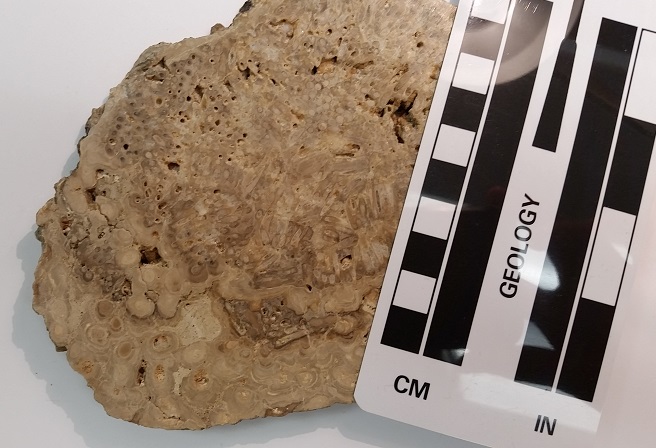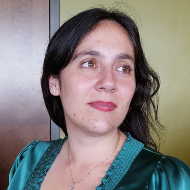Last Friday I showed you a section of a fossil that stumped not only me, but an intern working in the museum, too. Here, take a look at the whole thing with a scale bar; see if that helps.

Did it? I’ll admit that it didn’t help me! But apparently, if you really know what you’re doing, it’s quite obvious what it is: a cross section of a type of tree fern, genus Psaronius. If you poke around online you can find plenty of photographs of Psaronius fossils, like this one of a root cross-section.
You’ll notice that this fossil looks kind of like our fossil, but a little inside-out. The structures we’d expect to see on the exterior of the cross section are on the interior, and vice-versa. According to the UIowa fossil curator, this is because our cross section is not a root cross section at all, but a slice of crown.
Weird, right? What’s going on with this tree fern? This is definitely not how modern plants organize themselves. In modern plants, one expects a certain amount of distinction between above-ground and below-ground activities. It turns out that Psaronius, like modern ferns, are plants with no true trunk despite their ability to grow up to ten meters tall. Their “trunk” was actually a massive bundle of rootlets, and these rootlets originated high in the central stem of the tree. Accordingly, in the crown, we might expect to see a certain amount of structural inversion.
This Psaronius specimen dates from between 360–250 million years ago; another plant fossil from the time before flowers. Animal evolution is always interesting to see through the fossil record, but in some ways I find plant evolution even more remarkable. Plants have undergone such major changes in their vasculature, their organization; even their basic modes of reproduction. To give you a little time-scale perspective, there is fossil evidence of animals giving live birth around 250 million years ago. Flowers don’t appear in the fossil record until 130 million years ago! Pretty wild, right?
The winner this week? Dan Phelps! Although he didn't seem willing to bet it all on tree fern, his first hunch was indeed correct. Congratulations, and thanks for playing! If you have a fossil you want to share, send your pictures to me at schoerning at ncse.com.

